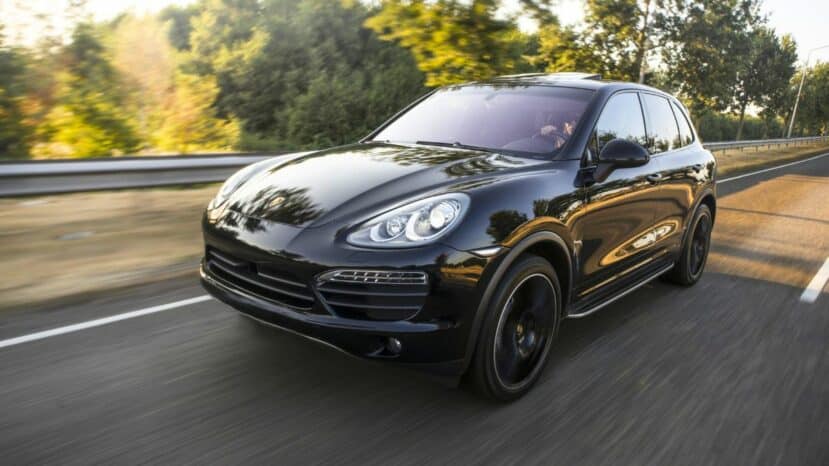Porsche Cayenne electric: structural battery for greater range, rigidity and space on board

The next Porsche Cayenne takes a major step forward with a battery that forms part of the chassis. According to concordant technical information, the SUV is preparing to go electric with an approach designed for the road and family use.
A discreet revolution under the floor
The principle is simple, yet it changes everything. The
This strategy has a dual benefit. On the one hand, the Porsche Cayenne can offer more precise cornering behavior. On the other, the passenger compartment benefits from a better seating position, and therefore greater
The pack housed in the body can accommodate large-cell modules. These provide energy density and targeted cooling. As a result,
“The battery is no longer just a pack, it’s part of the chassis.”
Dimensions, mass and rigidity: what the SUV gains
A structural pack doesn’t just save space. It makes the floor more resistant to torsion. As a result, the front-end response becomes sharper, even on bumpy roads. The Porsche Cayenne should gain in comfort and stability at high speeds.
This architecture also aids suspension development. Engineers can aim for finer damping laws. On the other hand, battery thermal calibration remains key to preserving performance. In addition, the cooling strategy influences cell longevity under high stress.
- Structural battery architecture on a top-of-the-range SUV like the Porsche Cayenne.
- Increased floor rigidity for more precise guidance.
- Lowered center of gravity to reduce roll.
- Careful thermal management to support rapid charging.
- Replaceable modules to simplify certain maintenance operations.
Autonomy, recharging and daily use
The promise relates primarily to long-distance efficiency. With an optimized structure, mechanical losses are slightly reduced. As a result, electronics can concentrate on energy management. The electric Porsche Cayenne is said to be aiming for a competitive range in its segment.
Fast charging remains a major focus. A high-voltage system helps reduce downtime, especially on freeways. Also, terminal mapping and preconditioning become central to the experience. The Porsche Cayenne should prepare its battery before every planned stop.
Porsche – 113 kWh integrated high-voltage battery. Lithium-ion battery; 6 interchangeable modules; large NMCA pouch cells.
Production and maintenance: Porsche’s plans
Integrating the battery into the body requires very precise production. Assembly tolerances influence final rigidity. Each module must fit like a structural part. The Porsche Cayenne will benefit directly from this in terms of manufacturing consistency.
In terms of maintenance, the choice of interchangeable modules minimizes downtime. In the event of a problem, a module can be replaced without having to remove the entire system. As a result, costs and lead times should remain contained. This approach is in line with measurable sustainability.
Materials, cell chemistry and safety
The use of large-format NMCA pouch cells is an efficiency measure. The presence of aluminum in the chemistry improves high-voltage stability. In addition, energy density is improved without sacrificing safety. The Porsche Cayenne thus benefits from a better weight/performance ratio.
Passive safety remains the priority. Dedicated deformation zones surround the structural battery. This ensures that impact energy is dissipated away from the cells. In short, the pack enhances rigidity while protecting the passenger compartment.
Thermal management is at the heart of this system. A dedicated circuit channels heat to where it is generated. Sensors then control the temperature cell by cell to prevent any drift. The Porsche Cayenne can maintain stable performance even under heavy stress.
Driving, towing and family life
On the road, the lower seat height enhances the feeling of control. And yet it’s still easy to get on board for everyday use. Also, commutes benefit from finer regeneration. The driver retains a clear feeling of control, even when driving at a leisurely pace.
For weekend getaways, towing is an important issue. Instant torque assists low-speed manoeuvring. As a result, a caravan or a boat carrier gains in ease. In this way, the Porsche Cayenne retains its versatility as a large SUV.
Timetable, competition and customer expectations
Porsche takes one step at a time towards marketing its large electric SUV. Final specifications have not been fully detailed. Some data are still undergoing industrial validation. The Porsche Cayenne continues to be tested, both on the road and on the track.
The segment is getting denser, with ambitious electric rivals. However, not all are adopting a structural battery. This technical route could offer a tangible chassis advantage. As a result, dynamically-minded customers will see it as a key asset.
Buyers expect concrete, verifiable facts. Autonomy, charge and capacity figures need to be transparent. What’s more, modular reparability reassures them about long-term costs. The Porsche Cayenne is thus in line with very pragmatic expectations.





No comments
Post a comment
Always participate in accordance with the law and with respect for others.